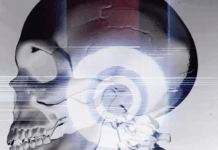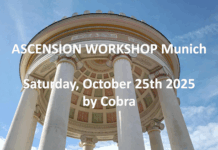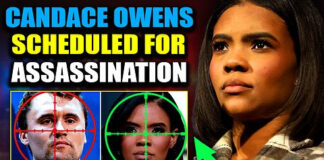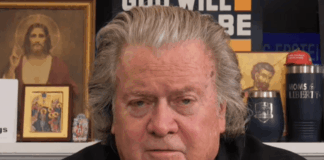How many times have you thought something was absolutely true without ever questioning it? The mind is not an empty space where free thoughts flow—it is quite the opposite.
Throughout our lives, it is constantly conditioned, shaped by deeply ingrained beliefs that we learn, experience, and unconsciously adopt from our environment.
But are our belief systems truly our own? Or are they merely repetitions of other people’s thought patterns?
Most of our thinking is not even our own but an inherited system shaped by family, society, education, and culture.
This conditioned mind filters what we see in the world, how we perceive ourselves, and the decisions we make. But can we break free from it?
Can we recognize that we are not the same as our learned belief systems?
1. How Is the Mind Conditioned?
The mind is like software that has been programmed throughout our lives.
From childhood, we learn what it means to be “right” or “wrong,” what is “possible” or “impossible,” what is “valuable” and what is “useless.” But who said these “truths” are actually true?
Sources of conditioning:
Family patterns – beliefs passed down by parents and the environment that shape how we see ourselves and the world.
Education and social norms – definitions of “success,” “happiness,” and “failure.”
Cultural and religious influences – traditions and doctrines that subtly shape our thinking.
Example: Isabella grew up in a family where she was taught that “money must be earned through hard work.” Years later, when she found a job she truly enjoyed and that provided financial stability with ease, she felt guilty. Her mind couldn’t accept the possibility that money could flow without struggle, because her conditioned belief system ruled it out.
Self-Inquiry Question: What beliefs have you inherited from your family or environment that you have never questioned? Are they truly yours?
2. The Invisible Prison of Belief Systems
Belief systems are like glasses through which we see the world, but since we always wear them, we don’t even realize they distort reality.
The problem is that these beliefs often limit us, unconsciously determining our possibilities and behaviors.
What are the most common limiting beliefs?
“I am not good enough.”
“Things never change.”
“Only hard work leads to success.”
“Money or success is bad.”
Example: As a child, James always heard, “Don’t dream too big—stay grounded in reality.” As an adult, he immediately doubted himself when he came up with a new business idea. The issue was not the idea—it was the belief system ingrained in him that “dreaming is dangerous.”
Self-Inquiry Question: What mental limitations from the past prevent you from acting freely?
3. How Can We Break Free from Conditioned Thinking?
The first step toward freedom is realizing that our thoughts are not who we are.
We do not have to consider every thought to be true. We do not have to follow every belief the mind automatically presents.
How can you start dismantling conditioned belief systems?
Observe what thoughts arise automatically in a given situation. Ask yourself: “Is this truly my opinion, or just a learned thought?”
Try adopting a different perspective. How would someone with different beliefs see this situation?
Look for exceptions! If, for example, you believe “only hard work leads to success,” notice those who have achieved success effortlessly.
Example: Lily always believed that “life is a struggle.” One day, she met someone who lived joyfully and effortlessly. This made her reflect: “Is it possible that life is not necessarily a battle, but I just believed it was?” After this realization, she consciously began looking for moments when life flowed naturally without struggle.
Self-Inquiry Question: If you could question one deeply ingrained belief today, what would it be? What would happen if you allowed yourself to think differently about it?
4. True Freedom – Transcending Belief Systems
Thoughts come and go, but you are not your thoughts.
True freedom begins when you no longer automatically believe the stories your mind tells.
When you recognize that beliefs are merely learned patterns, and that they can be changed at any moment.
Self-Inquiry Exercise:
Observe your thoughts today. When you feel, “this is the truth,” ask yourself:
“Is this really true, or just an old conditioned pattern?”
Notice how it feels when you allow yourself to think differently.
Perhaps for the first time, you will experience what it is like to be guided not by learned beliefs but by pure awareness.
Excerpt from Frank M. Wanderer’s new book The Path From The Personal Self To The Universal Consciousness: The Teachings of Consciousness
About the author:
Frank M. Wanderer, Ph.D D., is a professor of psychology, a consciousness researcher and writer, and the publisher of several books on consciousness . With a lifelong interest in the mystery of human existence and the work of the human mind, Frank’s work is to help others wake up from identification with our personal history and the illusory world of the forms and shapes, and to find our identity in what he calls “the Miracle”, the mystery of the Consciousness.
From wakeup-world.com
Disclaimer: We at Prepare for Change (PFC) bring you information that is not offered by the mainstream news, and therefore may seem controversial. The opinions, views, statements, and/or information we present are not necessarily promoted, endorsed, espoused, or agreed to by Prepare for Change, its leadership Council, members, those who work with PFC, or those who read its content. However, they are hopefully provocative. Please use discernment! Use logical thinking, your own intuition and your own connection with Source, Spirit and Natural Laws to help you determine what is true and what is not. By sharing information and seeding dialogue, it is our goal to raise consciousness and awareness of higher truths to free us from enslavement of the matrix in this material realm.
 EN
EN FR
FR


























